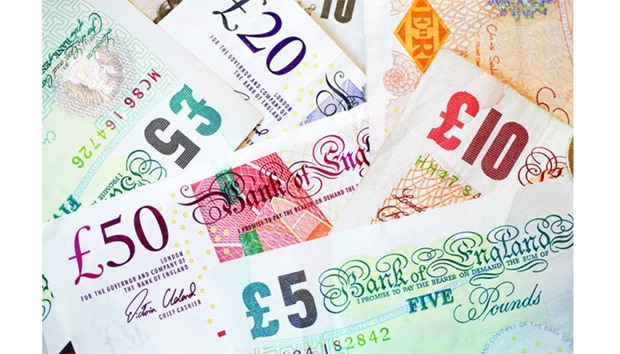Just as poor returns trigger an exodus from hedge funds, at least one category is mounting a comeback.
Currency-focused funds tracked by a Parker Global Strategies index are on pace for a 1.6% return this month, halting the longest losing streak since at least 2003. Traders using trend-following strategies have driven returns in October, according to Deutsche Bank indexes, as central banks become more predictable and sterling continues its precipitous post-Brexit slide.
Hedge funds that boosted net bullish positions on the dollar to the highest since February this month have reaped the rewards as the greenback surged almost 2% amid growing certainty that the Federal Reserve is on pace to raise interest rates by year-end. Traders blindsided by June’s Brexit vote have also made amends, ramping up wagers against the pound to a record, according to the Commodity Futures Trading Commission data, before the currency began plunging anew on concern political leaders will take a hard-line approach to Britain’s retreat from the European Union.
“There’s a little bit of a turnaround this month and maybe a bit of a double down on the dollar,” said Adrian Helfert, senior portfolio manager in Durham, North Carolina at Amundi Smith Breeden, which has $10bn in assets under management. “What the Fed says when they hike in December will be a big impact for the go-forward valuations on the US dollar.”
This month’s gains cut the Parker index’s losses for the year to 2%. The measure slumped 1.7% in September, its largest monthly decline since June 2015.
The upturn for currency funds is a rare bit of good news for the hedge-fund sector. Investors pulled $28.2bn from the industry in the third quarter, the most since the aftermath of the global financial crisis, according to Hedge Fund Research.
One key to this month’s gains has been rising bets that the Fed will raise interest rates and the support that’s provided for the greenback. Hedge funds and other large speculators held net-bullish futures positions on the dollar near the highest in eight months, according to CFTC data for the week ended October 18. Bets that the currency will rise versus eight major peers outnumbered bearish wagers by 195,402 contracts.
The Bloomberg Dollar Spot Index, which measures the US currency against 10 major counterparts, has gained 1.9% this month, paring its 2016 slump to 2.2%.
Futures show a 68% chance the US central bank will raise rates by year-end, up from 61% a month ago, based on the assumption that the effective fed funds rate will trade at the middle of the new Federal Open Market Committee target range after the next increase.
Bets that sterling will weaken outnumbered bullish wagers by 91,558 contracts last week, remaining near a record high reached October 4. The pound has lost almost 6% this month and 17% this year.
UK Prime Minister Theresa May’s frosty reception from the European Union last week added to evidence the pound’s weakness may not be done. In addition, European Central Bank President Mario Draghi’s efforts to halt talk that he may soon look to taper the ECB’s bond buying programme bolstered speculation that easy money in the 19-nation eurozone will help drive monetary policy divergence with a tightening Fed.
Together, those themes helped boost the trend-following momentum strategy for currencies by 3.2% this month, according to Deutsche Bank data. Traders utilising this tactic apply models that analyse historical patterns, such as moving averages and levels of support and resistance, for clues to whether a trade has run out of steam or has more room to go.
The carry trade, a strategy in which investors borrow in Group-of-10 currencies with low interest rates and use the proceeds to buy assets with higher yields, returned 1.7% this month, the most since June. Traders who used the yen to buy its 16 major peers gained money on 10 of those trades.
“Quantitative strategies that look at interest rates are starting to see that divergence,” said Richard Benson, managing director and co-head of portfolio investment at Millennium Global Investments in London.
A laggard has been the valuation strategy. Investors have lost 1.5% in October on trades that buy undervalued currencies and sell expensive ones.
“Global macroeconomic uncertainties have eased, likely making the path of monetary policy more predictable,” said Neil Staines, head of trading at ECU Group, a London-based money manager specialising in foreign exchange.

Bets that sterling will weaken outnumbered bullish wagers by 91,558 contracts last week, remaining near a record high reached on October 4. The pound has lost almost 6% this month and 17% this year
